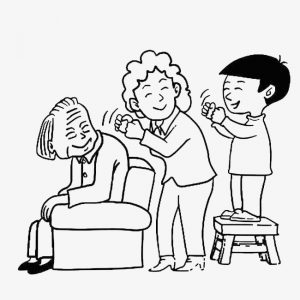My learning highlights from these past few weeks include making Korean recipes using Korean YouTube tutorials. In particular, I have been enjoying Chef Baek Jong-Won’s recipes. Baek Jong-Won is a famous South Korean chef who owns several restaurant chains and hosts several Korean television series including Top 3 Chef King, Baek Jong-won's Food Truck, and Baek Jong-won's Alley Restaurant. As someone who enjoys cooking and eating Korean foods, my language partner and I decided that it would be a good idea to learn how to comprehend and follow directions in Korean by following along with Chef Baek’s Korean food cooking tutorials.
We decided to follow Chef Baek’s kimchi-jjigae recipe. Kimchi-jjigae is a classic Korean stew dish made with kimchi, pork or seafood, scallions, onions, and diced tofu. It is one of the most common stews in Korean cuisine. While I understood what the ingredients were in Korean, I found myself struggling to understand Chef Baek’s specific directions on how to prepare the ingredients. I also found it difficult to understand his heavy South Chungcheongnam-do dialect. South Chungcheong Province, also known as Chungnam, is a province of South Korea located in the Hoseo region in the southwest of the Korean Peninsula. As someone who grew up hearing the standard ‘Seoul’ accent from my parents, it was interesting to hear the tonal differences between Chef Baek’s pronunciation and what I am accustomed to. Although cooking a Korean recipe was not a part of my original learning plan, I think it was a good language comprehension exercise for me.
To practice my hangul writing, I started texting my language partner in Korean, using commonly used words and phrases. Texting was a new challenge for me because I kept making mistakes with the spacing between the words. It was also difficult to type certain words that were difficult to spell. For example, I misspelled the word “괜찮아” when trying to say “it’s okay” because it contained multiple characters in chunks. I found myself heavily relying on the auto-check function in my phone to fix these mistakes but it was good texting practice for me and my language partner corrected my spacing errors.

